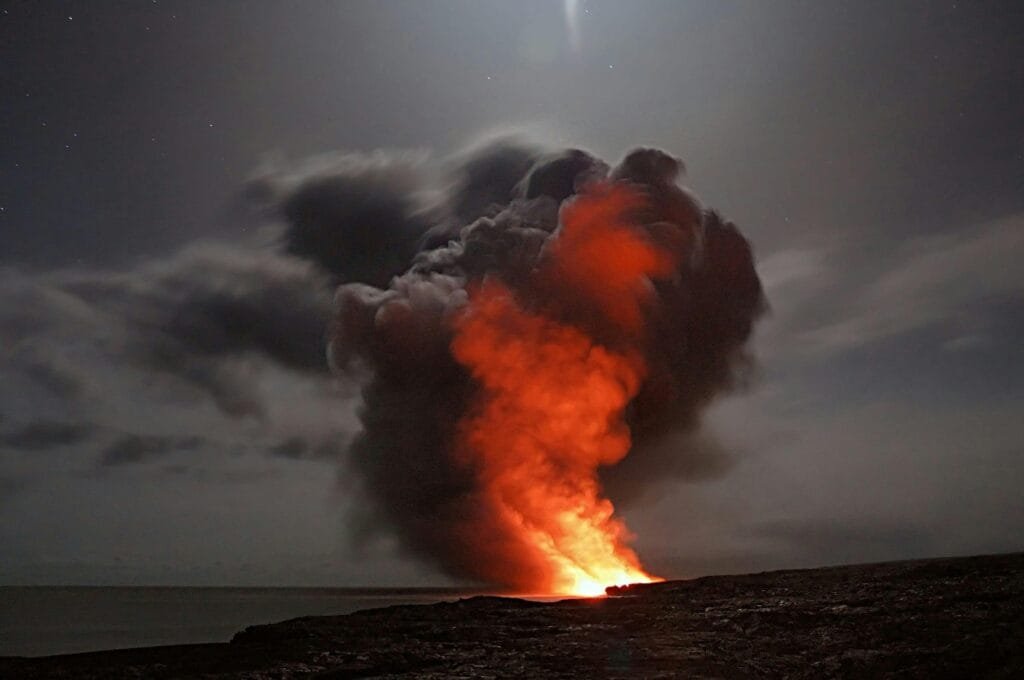Wildfires have become more frequent and destructive due to climate change and urban expansion, also for the unsustainable land management practices. The report explores the sustainable strategies to reduce fire risks with a focus on lessons learnt from the recent Los Angeles wildfire incidents. Increasing urban planning, inflating controlled burns, and involving communities in the fire protection initiatives are some of the main proposals for this report.
Most of the time, wildfires are natural phenomena that play a vital role in maintaining a certain ecosystem. How about the growing intensity and frequency of these events driven by climate change and human activities, which have cost a significant amount of environmental, economic, and social damage in recent years? The recent wildfire in Los Angeles served as a stark reminder of the urgent need for sustainable fire risk management practices.
Wildfire have an impact on ecosystem destroyed biodiversity release massive amount of carbon dioxide and destruct the communities. According to the National Interagency Fire Centre, the U.S. experienced over 68,000 wildfires in 2022, burning almost 7.6 acres of forest areas. Why are the urban and wild land interfaces particularly vulnerable from the other areas?
The recent Los Angeles fire incident
The Los Angeles region was divested by a flame that began on January 7, 2025, which displaced tens of thousands of people and killed over 24 individuals as of January 14. Over 23,000 acres were consumed by the Palisades fire, which was the first to break out and the least controlled, destroying nearby towns. These events are among the bloodiest and most catastrophic in California history, along with the Eaton fire. Urban growth into fire-prone areas increased the hazards and made evacuation and firefighting more difficult. Prolonged dry conditions, strong winds, and thick vegetation also contributed to the flames.
Key Statistics:
- 23,000 acres burnt by the Palisades fire alone.
- 24 lives lost and tens of thousands displaced.
- Hundreds of homes were destroyed, with damages expected to surpass $1.2 billion.
- 10% increase in fire frequency in California since 2010.


Sustainable Practices to Reduce Fire Risks
1. Prescribed Burns
Controlled burns are a proven method to reduce fuel loads in fire-prone areas. By mimicking natural fire cycles, prescribed burns help maintain healthy ecosystems and prevent the accumulation of dry vegetation.
- Example: Australia’s Indigenous fire management practices have significantly reduced wildfire severity by strategically burning small patches of land.
2. Community Engagement
Educating communities about fire risks and preparedness can save lives and property. Fire safety workshops, evacuation drills, and public awareness campaigns are crucial.
- Example: The “Ready, Set, Go!” program in California has successfully increased community resilience to wildfires.
3. Sustainable Urban Planning
Designing fire-resistant structures and landscapes can mitigate damage in urban-wildland interfaces. Key measures include:
- Using non-combustible building materials.
- Creating defensible spaces by maintaining vegetation-free zones around properties.
- Implementing zoning laws to limit development in high-risk areas.
4. Vegetation Management
Replacing invasive, fire-prone plants with native species can reduce fire risks. Native vegetation is often less flammable and better adapted to local fire regimes.
5. Policy and Funding
Governments must prioritise sustainable fire management policies and allocate adequate resources for prevention and restoration. Incentives for adopting fire-resistant designs and funding for research on fire ecology are essential.
Lessons from the Los Angeles Fire Incident
The Los Angeles wildfire highlighted several critical gaps in fire management:
- Urban Sprawl: Development in high-risk areas increased vulnerability.
- Insufficient Vegetation Management: Dense, dry vegetation fuelled the fire’s rapid spread.
- Emergency Response Challenges: Limited access to affected areas delayed firefighting efforts.
Recommendations:
- Implement stricter zoning regulations to limit development in fire-prone regions.
- Increase funding for prescribed burns and vegetation management.
- Enhance community education programs to improve preparedness.
Reducing fire risks requires a holistic approach that combines ecological understanding, sustainable practices, and community involvement. The recent Los Angeles wildfire underscores the urgency of adopting proactive measures to mitigate future incidents. By investing in sustainable fire management strategies, we can protect lives, property, and ecosystems from the growing threat of wildfires.
References
1. National Interagency Fire Centre. (2022). Wildfire Statistics.
- The National Interagency Fire Centre provides annual reports and historical year-end fire statistics, including data on the number of wildfires and acres burnt.
- URL: National Interagency Fire Centre
2. California Department of Forestry and Fire Protection (CAL FIRE). (2025). Incident Reports.
- CAL FIRE offers detailed incident updates on wildfires, including statistics on fire size, containment, and impact on structures.
- URL: CAL FIRE
3. Indigenous Fire Management Practices: Lessons from Australia. (2023).
- This source discusses how Australia’s Indigenous fire management practices have effectively reduced wildfire severity through strategic controlled burns.
- URL: Indigenous Fire Management Practices
4. Ready, Set, Go!” Program. California Fire Safety Initiative. (2022).
- The “Ready, Set, Go!” program is a California fire safety initiative aimed at increasing community resilience to wildfires through education and preparedness.
- URL: Ready, Set, Go! Program
5. Media Update: Eaton and Palisades Fires. Los Angeles County Recovery. (2025).
- This media update provides detailed information on the Eaton and Palisades fires, including fire size, containment status, and the number of structures threatened, damaged, and destroyed.
- URL: LA County Recovers
6. Annual 2022 Wildfires Report. National Centres for Environmental Information. (2022).
- This report offers a comprehensive summary of wildfire activity in 2022, including statistics on the number of fires and acres burnt.
- URL: NCEI

